Mouth taping has moved from niche to mainstream, and one brand in particular often sparks curiosity. MyoTape is designed to encourage lips to rest together so the nose can do the breathing. When applied correctly, it feels surprisingly gentle, yet it can make a clear difference to dry mouth, snoring linked to mouth breathing, and daytime habit training.
Getting it right is all about preparation, fit and safety. The goal is a light cue for lip closure, not a seal. The mouth should still open if you need to cough, talk or take a sip of water. With that in mind, here is a practical, clinician-style guide to applying MyoTape with confidence.
What makes MyoTape different
Many tapes cover the lips. MyoTape is a stretch cotton loop that sits around them. It draws the cheeks in very slightly so the lips meet with minimal effort. Because the centre remains free, you are not blocked from opening your mouth if necessary.
A few points about the design:
- Hypoallergenic adhesive on a soft cotton that flexes with facial movement
- Sizes for adults and children
- The mouth is not sealed shut, which reduces anxiety for people new to taping
- Intended as a habit cue for nasal breathing, day or night
This shape matters. You are not trying to clamp the jaw shut. You are guiding a relaxed lip seal while keeping a margin of safety.
Safety first
Before any tape touches your face, decide if it is appropriate for you. If in doubt, speak with your GP, dentist, ENT specialist or sleep clinician.
Avoid mouth taping, or seek medical advice first, if you have:
- Diagnosed severe sleep apnoea and you are not on effective therapy
- Significant nasal obstruction, frequent sinus infections or a recent nasal procedure
- Ongoing vomiting, nausea, heavy alcohol intake at night, or sedative medication that impairs awareness
- Severe asthma flare, COPD exacerbation or any condition that limits safe nasal breathing
- Active skin conditions around the mouth, open wounds, cold sores, or known adhesive allergies
- Children under the recommended age for the product, or children who cannot remove tape by themselves
Quick screening test: can you breathe comfortably through your nose for at least a minute at rest with your mouth closed, without gasping or panicking? If not, work on nasal care first and reconsider taping later.
Preparation that sets you up to succeed
Good results start with good prep. Two minutes here saves twenty minutes of frustration later.
- Patch test: place a small corner of tape on the jawline for 30 minutes during the day. Look for redness, itch, burning or swelling during the next 24 hours.
- Skin clean and dry: wash the area around your mouth with mild soap, rinse and pat dry. Adhesives dislike oils.
- Avoid moisturisers: no balms, serums or SPF where the tape will sit.
- Beard strategy: trim the area immediately around the lips if possible. If you prefer a full beard, expect weaker adhesion and use gentle tension only.
- Lip position practice: sit upright, close the mouth lightly, place the tongue on the palate behind the front teeth, breathe quietly through the nose. Get used to this posture before adding tape.
A clear, step by step application
Follow this sequence and you will eliminate most common issues.
- Prepare the strip
- Take one MyoTape strip from the pack.
- Stretch it slightly to feel the elastic recoil, then let it relax.
- Position your lips
- Sit or stand upright.
- Let the jaw hang comfortably, lips just touching.
- Place the tongue against the palate. This reduces the urge to mouth breathe.
- Align the opening
- Hold the tape so the central cutout aligns with your lips.
- The idea is to frame the mouth, not cover it.
- Anchor the top edge
- Lightly stick the upper part of the strip just above the upper lip.
- Do not stretch hard during placement. Lay it down, then press to secure.
- Wrap to the sides
- Smooth the tape towards the corners of the mouth on both sides.
- Maintain the central opening around the lips. Keep it symmetrical.
- Secure the lower edge
- Bring the bottom part up so it rests just below the lower lip.
- Again, lay then press. Avoid pulling tight across the chin.
- Set the tension
- Gently press around the full perimeter to warm the adhesive for 5 to 10 seconds.
- Your lips should feel supported to stay closed, yet you should still be able to part them with a little effort.
- Test and adjust
- Try a few nasal breaths. You should feel calm and unrestricted.
- Open your mouth slightly to check that it is possible. This is your safety check.
- If the tape feels too tight or irritates, peel back a little and re-seat without stretch.
If you feel any urge to rip it off, it is too firm, or your nose is not clear enough right now. Remove the tape and try again another day after nasal care.
Fine tuning for comfort
A few millimetres makes a big difference. Try these small adjustments.
- Height: if the tape pulls on the nostrils or chin, lower or raise it a touch.
- Symmetry: wrinkles on one side lead to hot spots. Smooth them out from centre to edge.
- Tension: the cotton has stretch. Apply it relaxed, then gently press. Do not strap it on with force.
- Lip gap: keep a small visible gap at the centre. This reduces any sense of being sealed.
For side sleepers, check that the pillow does not catch an edge of the tape. A silk or satin pillowcase reduces friction.
Building a routine that lasts
Rushing straight to a full night is a common mistake. Habits stick better with graded exposure.
- Day one to three: wear for 10 to 20 minutes while reading or working at a desk.
- Day four to seven: wear for an hour in the evening, then for a short nap if you nap.
- Week two: try the first part of the night. If you wake and want it off, remove it and sleep without.
- Thereafter: extend use as tolerated.
Consistency works better than intensity. Five calm nights beat one forced, anxious night.
Removing the tape without drama
Removal should be painless and should not irritate the skin.
- Wet your fingertips and dab around the edges to loosen the adhesive, or use a drop of facial oil at the border if your skin tolerates oils well.
- Peel back slowly, holding the skin down with your other hand to reduce traction.
- Work from the cheeks towards the centre, not straight down from the lip.
Do not reuse a strip. Once removed, it has collected skin cells and oils and will not adhere properly.
Common problems and smart fixes
The table below collects the issues people report most often and what usually solves them.
| Problem | Likely cause | What to try |
|---|---|---|
| Tape lifts after an hour | Skin not clean or too oily, facial hair interference | Clean with mild soap, fully dry, avoid moisturiser in the area, trim close to the lips |
| Feeling sealed or anxious | Tape placed too high or too tight, poor nasal patency | Re-seat lower with less stretch, keep central opening clear, use saline spray and test nasal breathing first |
| Skin redness after removal | Sensitive skin, aggressive removal | Patch test, use a sensitive-skin variant if available, loosen with water before peeling, change removal technique |
| Drooling or damp tape | Mouth open posture persisting, tongue low | Practise tongue to palate posture before taping, use gentle mouth closing exercises during the day |
| Snoring unchanged | Snoring not driven by mouth breathing, nasal issues persist | Work on nasal hygiene, consider ENT review, review body position and alcohol intake in the evening |
| Tape catches on pillow | Edge exposed, restless movement | Smooth edges fully, consider a softer pillowcase, review sleeping position |
Looking after your nose
MyoTape works best when the nose is clear. A few simple habits can make nasal breathing easier.
- Saline nasal rinse in the evening during allergy season or a cold
- Gentle steam inhalation before bed if you feel congested
- Keep the bedroom air moderately humid in winter
- Manage allergies with your GP’s guidance
- Train low, quiet nasal breathing during the day so it feels familiar at night
If your nose blocks repeatedly on one side, or you have frequent sinus infections, set up an ENT appointment before committing to nightly taping.
Special cases and practical nuances
Everyone’s face and habits are different. Tailor the approach to your situation.
Facial hair
- Short stubble near the lips gives the best compromise. Longer beards reduce adhesion and can tug on hairs during removal.
- Place the tape slightly higher on the upper lip and lower on the chin so it rests on skin, not hair.
Sensitive skin
- Shorter wear times at first, and remove with water.
- Consider a thin barrier of paper tape on the cheeks, then place MyoTape over it to keep adhesive off the skin. Test this stack during the day.
- Rotate placement a few millimetres each side night to night to avoid repeated stress on the same skin.
Orthodontic appliances and dentures
- Ensure appliances are comfortable with lips lightly closed before using tape.
- Discuss with your dentist if you are in active orthodontic treatment.
Athletes and breath training
- Use short daytime sessions to reinforce nasal breathing during low-intensity work, never during high-intensity training or if you feel air hunger.
- Warm up with nasal breathing drills without tape first. Tape is a cue, not a crutch.
Children
- Only use the child version on those in the recommended age range who can remove it themselves.
- Keep sessions short, supervised and calm. Make it a quiet reading time habit.
- If a child has recurrent mouth breathing, seek an assessment for tongue tie, allergies, enlarged adenoids or structural nasal issues.
How to judge if it is working
Rather than guessing, look for clear signals.
- Dry mouth on waking reduces
- Snoring linked to mouth opening decreases, confirmed by a partner or a recording app
- Less night-time waking with a sore throat
- More consistent nasal breathing during the day without thinking about it
- Improved tolerance to light exercise with nasal breathing only
Keep notes for two weeks. Small, steady gains matter more than dramatic one-night changes.
Pairing with good sleep habits
No tape can compensate for disruptive sleep routines. Give it the best chance by pairing with:
- Regular sleep and wake times
- A cool, dark, quiet bedroom
- Light evening meals and reduced alcohol
- Side sleeping if you snore more on your back
- A wind-down routine that relaxes the jaw and face
A relaxed jaw helps the lips touch without effort, so add a minute of gentle jaw mobility or soft humming before bed.
Myths to park
A few points that often come up in discussion.
- Mouth taping is not about forcing the jaw shut. It is a reminder for lips to rest together.
- You are not sealing off emergency breathing. With MyoTape, you can still open your mouth if needed.
- If you have diagnosed sleep apnoea, this is not a treatment. It may reduce mouth leak if you use CPAP with nasal pillows, but that decision belongs with your sleep clinician.
- If nasal breathing feels tight or panicky, fix the nose first. Tape does not solve a blocked airway.
A quick technique refresher you can save
- Clean, dry skin around the mouth
- Light lip contact, tongue to palate, jaw relaxed
- Frame the lips with MyoTape without stretch, then press to secure
- Test nose breathing and the ability to open the mouth slightly
- Start with short daytime sessions, build to longer use
- Remove slowly, loosening edges with water
- One strip per session only
Frequently asked practical questions
How long can I wear a single strip?
- One session only, whether that is 20 minutes in the afternoon or a full night. Discard after use.
Can I talk or sip water with it on?
- Yes, with MyoTape you can part your lips. It is designed to allow movement if needed.
What if I need to cough at night?
- Open your mouth and cough. The tape allows movement. If you feel unwell, remove it.
Does it help with drooling?
- It often reduces drooling linked to open mouth posture. Addressing tongue position and nasal care enhances that effect.
Will it irritate my skin?
- Most users tolerate it well. Patch test first. If you see redness, rest the skin, try shorter sessions, and consider a barrier strategy.
I use a nasal CPAP mask and my mouth keeps opening. Is taping compatible?
- Many users find it helps reduce mouth leak with nasal CPAP. Discuss with your sleep clinic before starting, and make sure your nose is clear.
Troubleshooting deeper issues
If problems persist despite good application, consider broader contributors.
- Chronic rhinitis or septal deviation reduces nasal airflow. Medical review opens the door for better results.
- Reflux can lead to mouth breathing and sore throat. Managing reflux often improves tolerance to nasal breathing at night.
- Anxiety can spike at bedtime. Brief breath training before lights out, like four seconds in through the nose and six out, can calm the body.
Simple cues help. A sticky note by the bed that says lips together, tongue up, breathe quietly reminds the body what to do before you even reach for the tape.
Storage, hygiene and waste
Keep the pack sealed and out of direct sunlight. Store at room temperature. Do not leave strips in a hot car or damp bathroom, which can affect adhesive performance.
Dispose of used strips in general waste. The small size minimises bulk. If you react to a strip that was fine last week, check storage conditions first.
Bringing the skill into daytime life
Night-time is only part of the picture. The more your body experiences relaxed nasal breathing during the day, the easier it becomes in sleep.
- Practise quiet nasal breathing on walks and low-intensity tasks
- Keep the tongue lightly suctioned to the palate whenever you remember
- Set a phone reminder named lips and nose every few hours for a week
- Limit mouth breathing chit-chat while working by pausing, closing the lips and continuing to type
MyoTape is a tool that complements this behaviour. Used with patience and a calm approach, it supports a healthier breathing habit pattern.
Quick reference checklist
- Confirm nasal breathing is comfortable first
- Patch test the adhesive
- Prep clean, dry skin, no moisturiser where the tape will sit
- Frame the lips without stretch, press to secure
- Keep the central opening clear
- Test breathing and mouth opening before sleep
- Start with short daytime sessions, build gradually
- Remove slowly, loosen with water
- One strip per session, never reuse
- Review nasal care and sleep habits if results are slow
Small adjustments go a long way. With clean prep, gentle placement and steady practice, MyoTape can feel like a natural part of a calmer, quieter night.











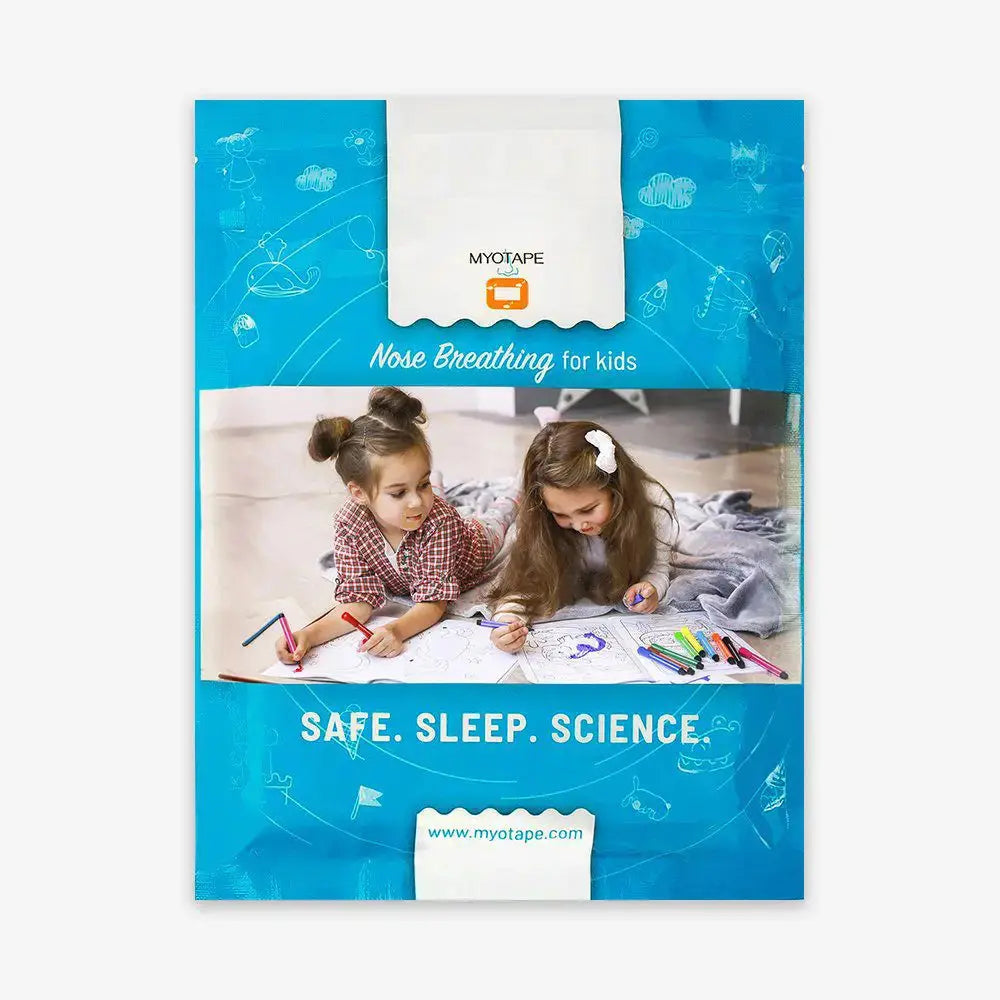
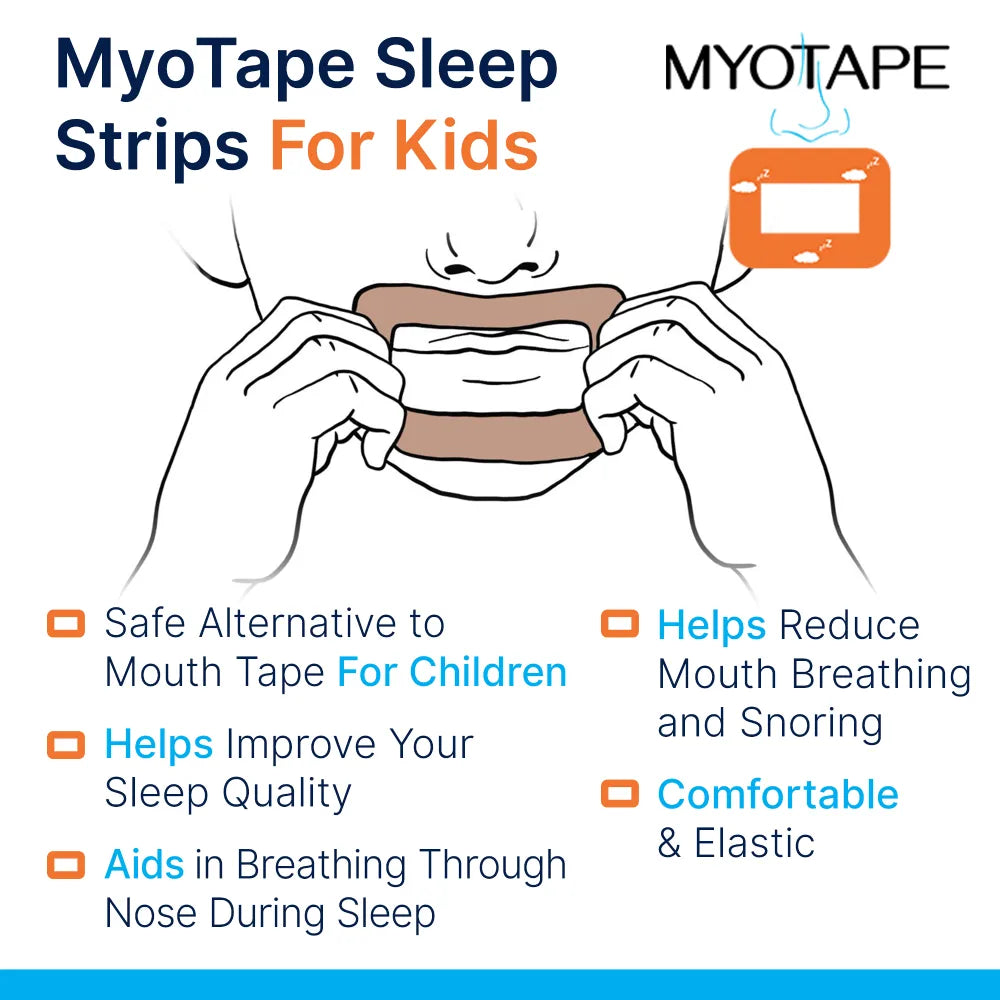
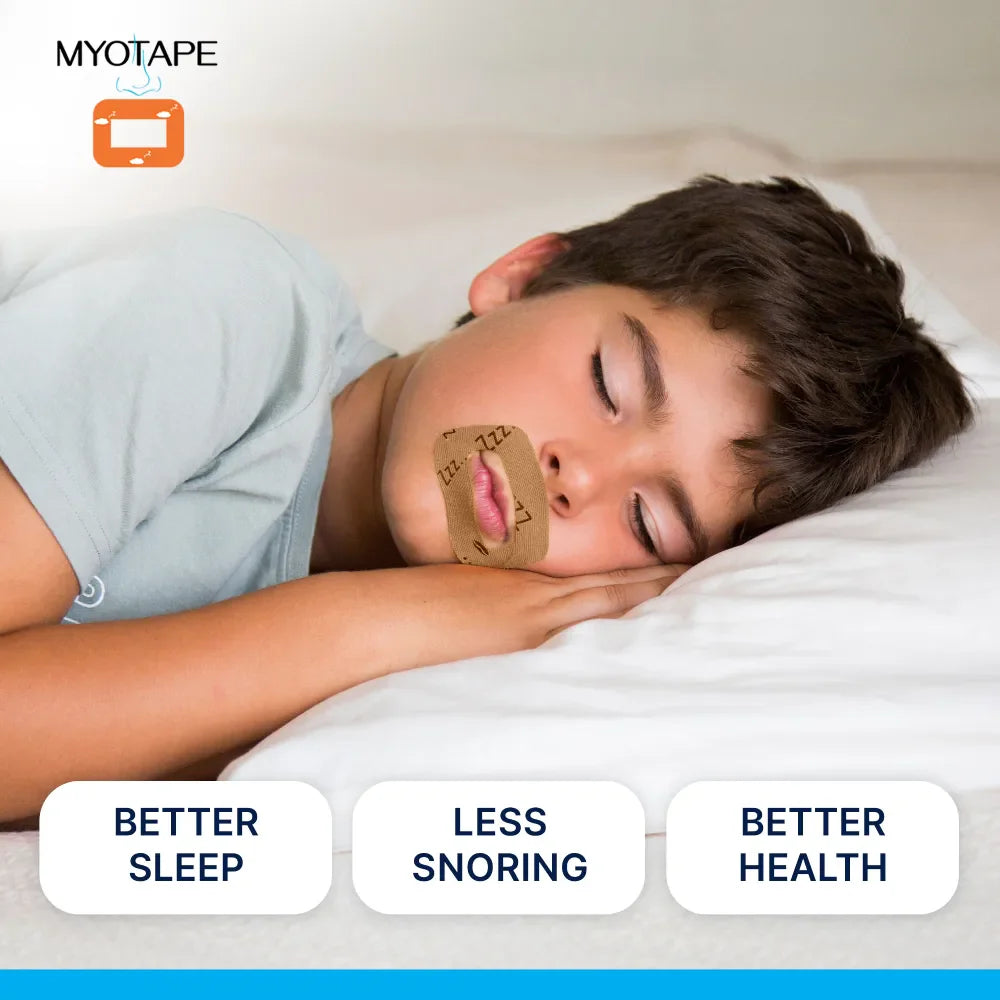
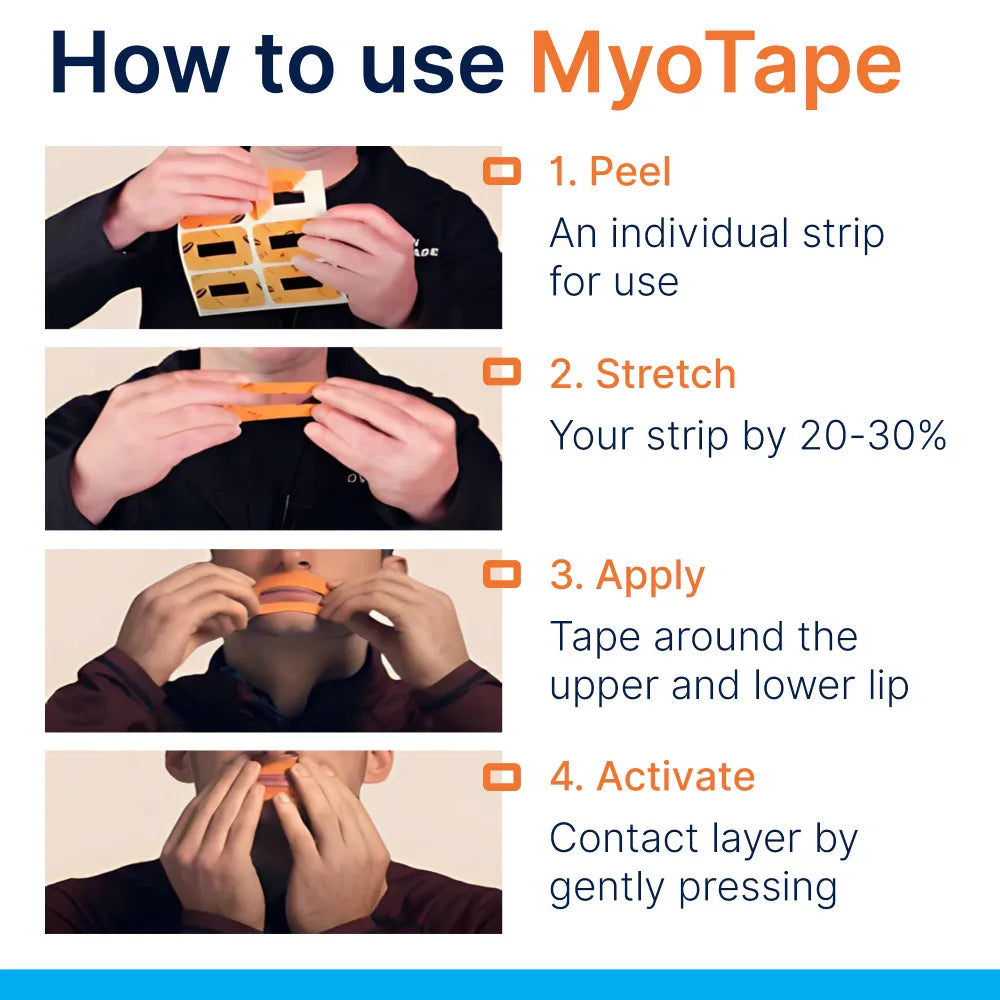
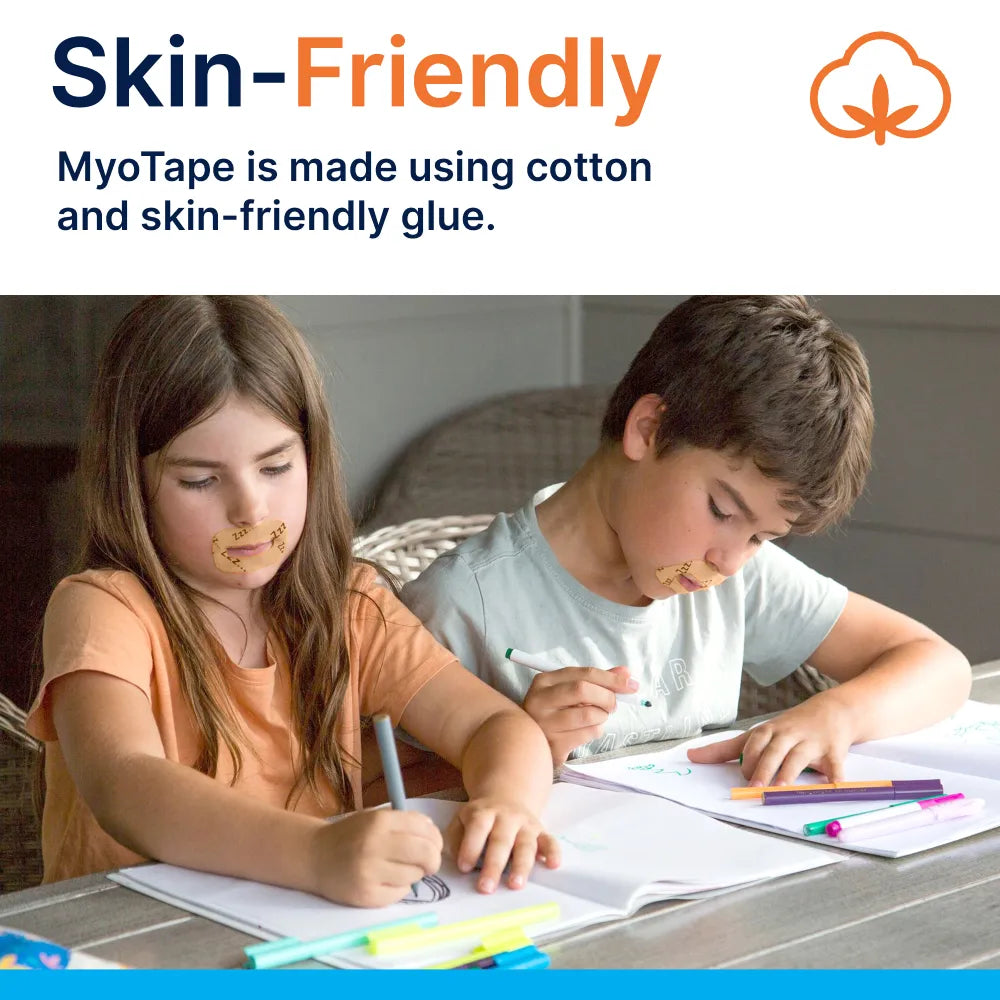










0 comments